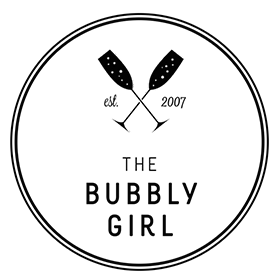
I think Nancy Silverton of Campanile and Mozza fame is the pastry chef genius behind these moist and chocolaty gems that start with a yeast batter. Top them with a simple ganache and stick a raspberry on top if you want to go all-out. The unfrosted corks would be divine with a sweet-tart red bubbly like Banfi’s Rosa Regale Brachetto d’Acqui.
1 cup plus 1 tsp sugar
One ¼-ounce package dry yeast
½ cup plus 2 tablespoons lukewarm water
1-½ cups unbleached pastry flour or all-purpose flour
½ cup plus 2 tablespoons cocoa powder, plus extra for dusting
1 cup (2 sticks) butter, melted and cooled, plus extra for greasing the pan
5 eggs
1 to 1-1/3 cup coarsely chopped bittersweet chocolate
Sprinkle ½ teaspoon sugar over yeast in a small mixing bowl. Pour lukewarm water over sugar and yeast and let sit until softened, about 5 minutes. Stir in ¾ cup flour and cover tightly with plastic wrap. Set aside in a warm place until bubbly, about 30 minutes.
Sift together cocoa powder and remaining 1 cup sugar and remaining ¾ cup flour. Make a large well in the center of the dry ingredients and pour in the butter, eggs and yeast mixture. Whisk together liquids and gradually mix in dry ingredients, whisking until completely incorporated. Stir in chocolate.
Spoon batter into standard or mini muffin tins lightly coated with melted butter, filling to the top. Bake at 375 on middle rack until corks are firm to touch, about 18 to 20 minutes for standard muffins; 7 to 8 minutes for mini muffins. Sift a fine layer of cocoa powder over the surface of the corks while still warm. Serve warm or at room temperature.
Makes 12 large or 24 small corks









